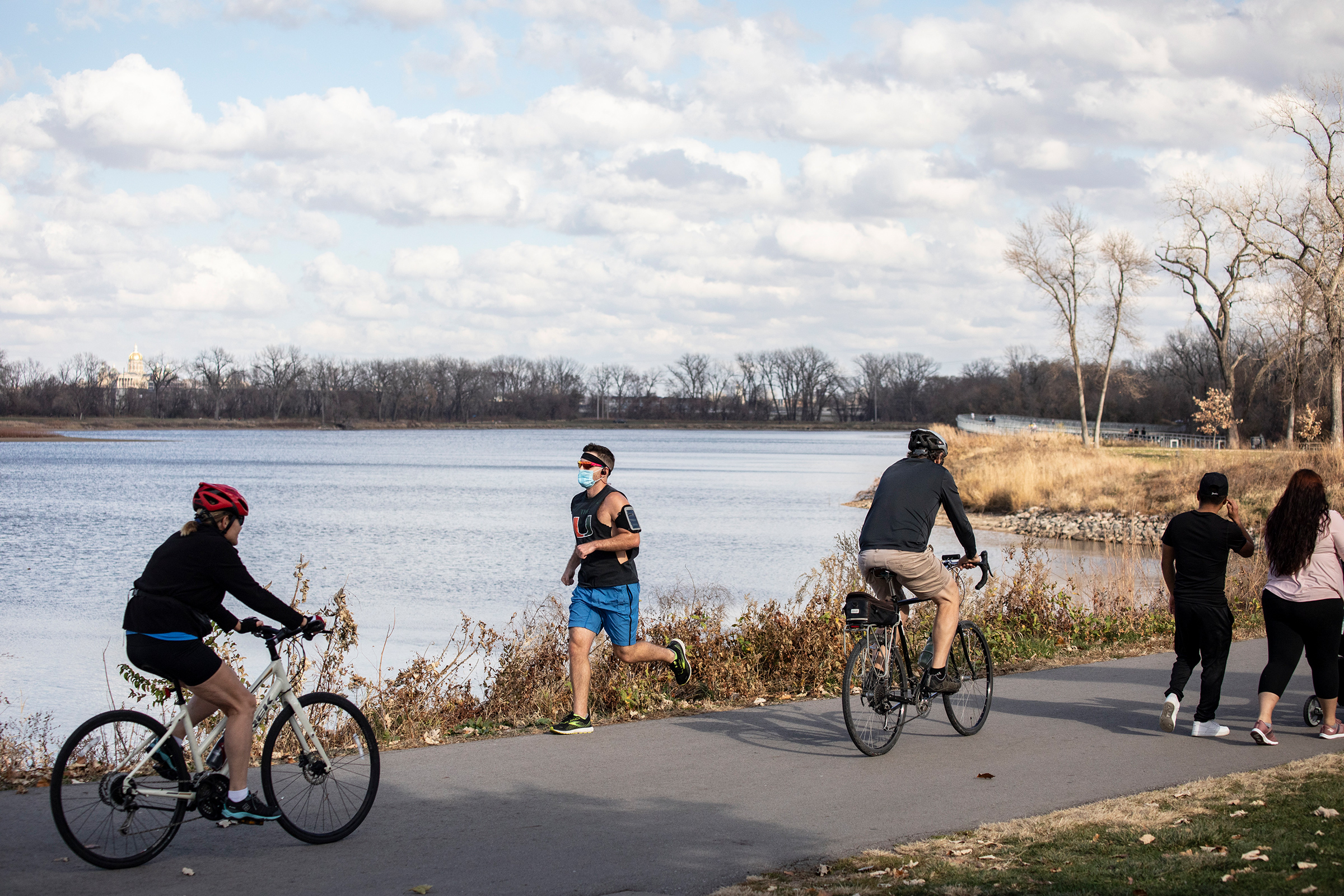
Like many others in the U.S., Ron Gumucio and his wife stopped going to the gym in 2020 as a precaution against COVID-19. To fill the void, Gumucio’s wife eventually purchased a stationary bike, joining the club of people who have splurged on pricey at-home exercise equipment. But Gumucio, 44, has gone in a different direction. Until he feels safe returning to the gym, he’s sticking to distinctly low-tech forms of fitness. He takes a daily walk around his New Jersey neighborhood. He jogs. He bought cheap resistance bands to sneak in a little strength training. Occasionally he uses the jungle gym in his local park to do pull-ups. His routine is nothing fancy, he says, but “it keeps my sanity.”
During the pandemic, lots of people have rediscovered the sanity- (and cash-)saving joy of back-to-basics fitness. The Peloton effect is impossible to deny–over 1 million people worldwide now pay to stream in-home classes for the company’s four-figure treadmills and stationary bikes–but at the same time, many people are returning to the simple pleasures of low-cost, low-equipment forms of physical activity. Body-weight training (i.e., training with minimal or no equipment) and outdoor activities were two of the five top fitness trends for 2021, according to the American College of Sports Medicine. YouTube has become America’s free gym, likely contributing to many retailers’ selling out of equipment like dumbbells and yoga mats during the pandemic. The running app Runkeeper also saw a 252% increase in global registrations last spring.
And many people are realizing they don’t miss the eucalyptus-scented towels and designer toiletries they used to pay for at the gym. In a recent survey by consumer-spending experts the New Consumer and Coefficient Capital, 76% of respondents said they’ve tried working out at home during the pandemic, and 66% said they preferred it to the gym. In a July 2020 poll by financial-services firm TD Ameritrade, 59% of Americans said they don’t plan to renew their gym memberships postpandemic, with 56% citing the appeal of more affordable ways to stay active. Many gyms are scrambling to add cheaper online options to retain members.
The U.S. health-club industry took in $35 billion in 2019. Prepandemic, many fitness fans didn’t bat an eye at spending $200-plus a month on a luxury gym membership or more than $30 for a single class at a boutique studio. Plenty of people will return to fitness centers of all cost levels after the pandemic. But it’s significant that as the wellness industry–long about status as much as about health–is idled by lockdowns, many are realizing they don’t miss fancy gyms much at all.
Nor do most people need them, research suggests. Gyms have some obvious benefits: they’re dedicated to exercise, stocked with a variety of equipment and can promote valuable social interaction. But numerous studies have shown that virtually any amount of physical activity, done at any intensity, can help prevent chronic disease, boost longevity and improve mental health. (A stroll around the block or a 15-minute YouTube yoga class really does make a difference.) Outdoor physical activity seems to be especially good for both the mind and the body.
Cedric Bryant, president and chief science officer at the nonprofit American Council on Exercise, thinks the changes to the wellness industry will outlast the pandemic. Many of the 20% of Americans who were gymgoers before the pandemic will likely return, he says. But the renaissance of simpler fitness approaches–the booming popularity of timeless activities like running, biking, yoga and hiking, as well as online programs that are far cheaper than their IRL counterparts–may usher in an era of increased affordability and accessibility in the wellness world, like the gym that cost Gumucio just $25 a month.
“People are going to return to the gym, but people will also look to mix in some of the old-school experiences,” Bryant predicts. “It won’t be so compartmentalized–[it’ll feel more like] ‘I’m just going out and doing what is naturally available to me.'” When the world reopens, we may find that our gym can be anywhere.
More Must-Reads From TIME
- Dua Lipa Manifested All of This
- Exclusive: Google Workers Revolt Over $1.2 Billion Contract With Israel
- Stop Looking for Your Forever Home
- The Sympathizer Counters 50 Years of Hollywood Vietnam War Narratives
- The Bliss of Seeing the Eclipse From Cleveland
- Hormonal Birth Control Doesn’t Deserve Its Bad Reputation
- The Best TV Shows to Watch on Peacock
- Want Weekly Recs on What to Watch, Read, and More? Sign Up for Worth Your Time
Write to Jamie Ducharme at jamie.ducharme@time.com